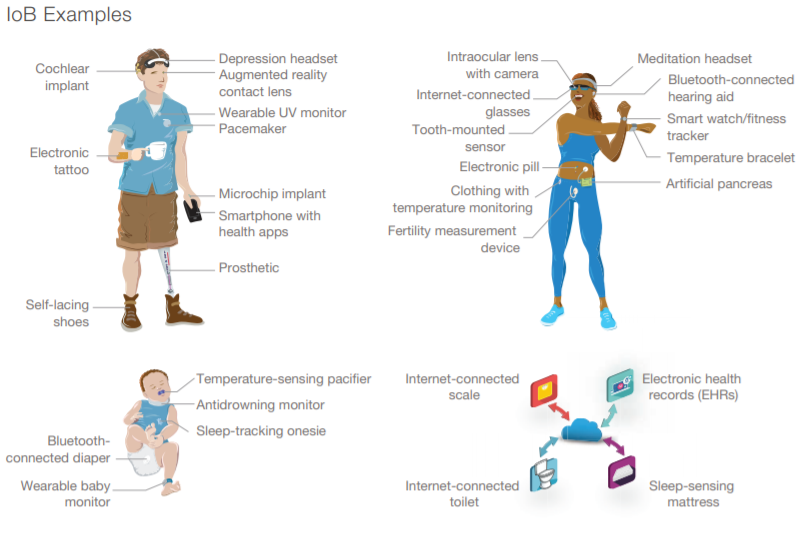First came brain implants for disabilities, next comes brain-computer interfaces (BCIs) to read & write memories and thoughts: perspective
Elon Musk’s announcement that the first human received a Neuralink brain implant this week comes almost three-and-a-half years after he said this technology would one day be able to upload and download memories between humans and machines.
On January 19, 2024, Musk announced on X:
“The first human received an implant from Neuralink yesterday and is recovering well. Initial results show promising neuron spike detection”
Musk also revealed that “The first Neuralink product is called ‘Telepathy,'” and that it “Enables control of your phone or computer, and through them almost any device, just by thinking.
“Initial users will be those who have lost the use of their limbs.”
With Neuralink’s Telepathy product, the initial goal is for restoration purposes — specifically to restore movement for those who have lost use of their limbs.
But if that’s the initial goal, what will be the secondary goals moving forward, and who will be selected to be the future users?
Remember the story of the three little pigs?
No I’m not talking about the children’s fairytale; I’m talking about the time Musk demonstrated Neuralink’s progress update on three pigs on August 28, 2020.
During the demonstration, Musk predicted:
“In the future, you will be able to save and replay memories”
“This is obviously sounding increasingly like a Black Mirror episode […] but essentially if you have a whole brain interface, everything that’s encoded in memory, you could upload”
“You could basically store your memories as a backup and restore the memories. Then ultimately, you could potentially download them into a new body or into a robot body. The future’s gonna be weird“
The implications of uploading and downloading memories into a new human body or machine are profound!
Who are you without your memories?
What happens if the memories being uploaded aren’t yours, or conversely, what happens if someone gets ahold of your private memories?
Could your memories, thoughts, or feelings — be they real or falsely-implanted — be used against you?
How easy would it be to hypnotize and brainwash entire populations if this technology were widely adopted among the general public and used by nefarious public-private actors?
In these dystopian scenarios, a person’s thoughts, feelings, and memories could be re-programmed, so that they could no longer harbor dissenting views, let alone remember who they were.
In legal systems, false memories could be implanted, or pain could be neurologically-inflicted to make a person confess to a crime they didn’t commit.
Speaking at the 2016 World Economic Forum (WEF) Annual Meeting in Davos, Switzerland, on a panel titled “What If: Your Brain Confesses?” Duke University professor of law and philosophy Dr. Nita Farahany explained:
“If we can get to the point where either you can have an unwilling suspect or an unwilling individual having their brain decoded in some sense, legal systems don’t bake-in any presumptions that we can do that, and so there is no legal protections that could be afforded to you […] So, I think we have to think about whether or not the brain is some special place of privacy. Is there some freedom of thoughts and not just freedom of speech that we need to be actively protecting.”
Dr. Farahany would later add:
“One of the emerging areas that is really interesting among neuroscience is ‘pain detection,’ and once we understand the circuitries that cause pain, I guess the question is, ‘could we then instill pain and use that in any coercive measures within the legal system?’”
Dr. Nita Farahany, WEF Annual Meeting, 2016
Returning to Davos in 2023, Dr. Farahany said that the ability to decode the brain didn’t even have to require an invasive implant like Neuralink’s, but rather wearables, like “fitbits for your brain.”
Speaking at the WEF last year, Dr. Farahany announced that with a non-invasive brain-computer interface (BCI):
“We can pick up and decode faces that you’re seeing in your mind — simple shapes, numbers, your PIN number to your bank account”
Dr. Nita Farahany, WEF Annual Meeting, 2023
If the ability to decode the brain is already as advanced as to be able to decode your bank account PIN with non-invasive tech, can you imagine what a Neuralink Telepathy-like brain implant will be able to decode in the future?
These technologies, whether implanted, ingested, or worn, are part of an interconnected ecosystem of sensors and transmitters known as the Internet of Bodies (IoB).
“Arguably, the most advanced and invasive IoB technology under development is the BCI, which can both read and write to the brain. DARPA and commercial technology developers (such as Neuralink and Facebook) are working in this field”
RAND Corporation, ‘Technological Approaches to Human Performance Enhancement’, November 2021

Another point on the ethics front of BCIs has to do with human performance enhancement, especially when it comes to military use.
A RAND Corporation report published in November, 2021, shows that the Pentagon has been investigating how to fundamentally alter what it means to be human, funding research into creating super humans that are smarter, faster, and stronger through human performance enhancement.
According to the report, potential applications for human performance enhancement using AI and BCIs include:
- Substantially reducing the time required to process data and respond to situations
- Allowing for human-system teaming (not only through better system design but through implantable brain-computer interfaces)
- Enabling complex, real-time, hands-free control of devices or robots
Here we see the similarities between Neuralink’s Telepathy, which looks to restore limb movement by reading thoughts, and the US Department of Defense, which is looking to control devices or robots with thoughts.
Concerning the seemingly telepathic nature of BCIs, the RAND report adds, “Humans can be trained to control all sorts of external devices, such as movement of a computer mouse, robotic arms, and drones.”
Speaking about the ethics of BCIs at the 2018 WEF Annual Meeting in Davos on panel called “When Humans Become Cyborgs,” National Academy of Medicine president Victor Dzau told the Davos elites that using brain-computer interfaces to augment humans beyond their natural capabilities was crossing the ethical line.
“I think you’re in pretty safe ground when you use these technologies for the purpose of curing disease, treating disease, or at least addressing impairment,” he said.
“I do think you start crossing the line when you think about enhancement and augmentation.”
Elon Musk’s announcement of the first human recipient of a Neuralink implant for restoring limb function is just the beginning of a very slippery slope filled with giant ethical potholes.
Whether it comes from Neuralink, DARPA, or some other public or private entity, the ability to transfer memories from human-to-human, from human-to-machine, or from machine-to-human seems to be an inevitable reality in Musk’s transhumanistic eyes.
But beyond the restorative, therapeutic, and human performance enhancement capabilities that are the promise of BCIs, there lies a darker side that can be used by corporations and totalitarian governments to manipulate our behaviors and enslave all of humanity.
Image by creativeart on Freepik












